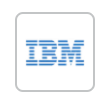Data analysis is the practice of working with data to glean useful information, which can then be used to make informed decisions. The data analysis process is a formal approach to working with data, which typically moves through several phases including identifying the question youâd like to answer, collecting raw data sets, cleaning your data, analyzing the data, and interpreting the results.
Learn data analysis
Your essential data analysis toolkit
Whether you want to become a data analyst, excel in your current career, or search for a new job, you can use data analysis to move toward your goals. Thatâs because when you strengthen your data analysis skills, you can make more informed decisions, assess your impact, and effectively share your results with others.
Data analysis is all about extracting meaning from data, and there are several tools you can use to make this process a bit easier. Some common tools and software include:- Microsoft Excel or Google Sheets to analyze smaller data sets
- Structured Query Language (SQL) to access larger databases
- Python or R to clean, manipulate, and visualize data
- Tableau or Power BI to visualize and present data
Here are some beginner-friendly data analysis courses to get started:
7-day free trialHaving fun with Excel and SQL?
FreePerhaps a career as a data analyst is in your future!
Data analysts are in demand and tend to earn above-average salaries, even at the entry level. Explore how to continue your data analysis journey with these helpful guides.
Data analysis FAQs
What is data analysis?
Is data analytics hard?
You are most likely already familiar with some aspects of data analysis, however formalizing that knowledge can involve building some technical skills, such as learning SQL or Python. Some aspects of data analysis can be more challenging to master, but donât worry: we have plenty of tips for rising to the challenge.
Python or R: Which should I learn?
Both Python and R are programming languages used to clean, manipulate, analyze, and visualize data, and both are considered relatively easy languages to learn. Thereâs no wrong choice when it comes to choosing which language to learn (or which to learn first). When in doubt, return to your goals. R tends to be better for statistical analysis and data visualizations, whereas Python tends to be better for working with artificial intelligence, deep learning, and big data.



















